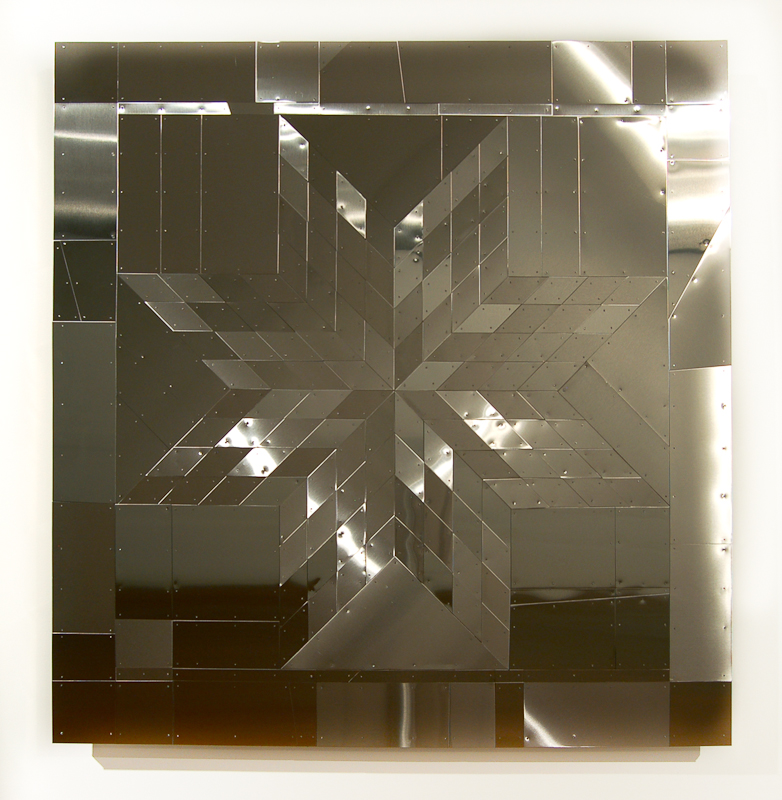First Nations artist Wally Dion rejuvenated star blankets by using circuit boards to build them in his exhibition at the Ottawa Art Gallery.
Wally Dion: Star Blankets, which runs until Feb. 17, is a collection of the Saskatoon artist’s works that combine modern materials with the traditional 19th century quilting pattern used for spiritual communication, said curator Catherine Sinclair.
“It’s paying homage to where communication comes from to show there’s history, but they’re also still related,” said Sinclair, who graduated from Carleton with a master’s degree in Canadian art history.
“Star Blanket” is the first piece viewers see when they enter the gallery. It’s built from recycled computer circuit boards, cut into intricate geometric pieces and fit together like pieces of a puzzle.
The gallery holds only a handful of pieces, but each one is striking in its own way, Sinclair said.
Six star blankets are placed together to form a barrier wall in a piece entitled “Shield Wall.” It’s the brightest work in the gallery with vibrant pops of yellow, blue and green.
“This work is inspired by Matthew Shepard’s ‘Angel Action’ protectors: friends who shielded his murderers’ trial from anti-gay religious protesters with large angel-wing sheets,” reads the description. Dion made the piece after hearing about the gay-bashing which led to Shepard’s death.
Dion not only changes the medium of star blankets but also the form. In “Game Over,” he toys with the star blanket image by building an empty Pac-Man maze out of circuit boards.
Dion’s choice of materials makes the First Nations patterns more relevant to people outside of the community, drawing a larger audience in, Sinclair said.
This piece illustrates the “voracious consumerism” of people selling and attacking indigenous culture until it’s “eaten up,” Sinclair said.
Dion studied fine arts at the University of Saskatchewan and many of his early works focused on the Russian propaganda glorifying labourers, Sinclair said. Dion decided to employ a similar method to dispel stereotypes about First Nations and draw attention to their hard-working labour force.
“A lot of mainstream culture sees aboriginal people as lazy drunks so his idea is to elevate the workforce,” Sinclair said.






